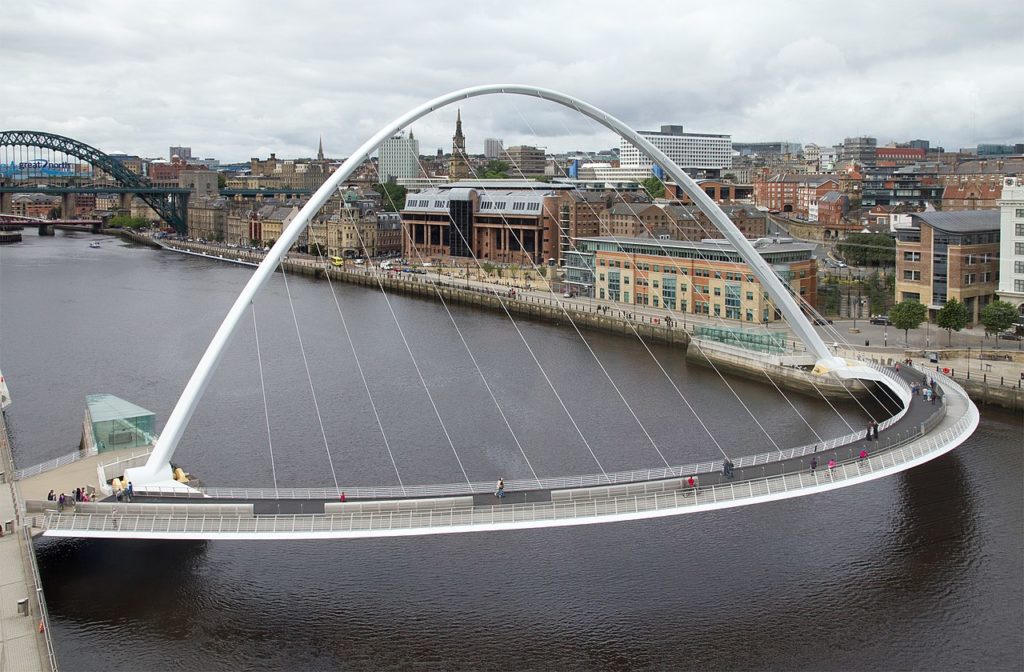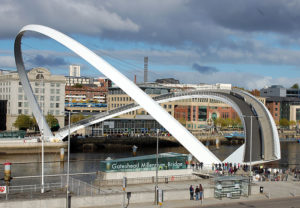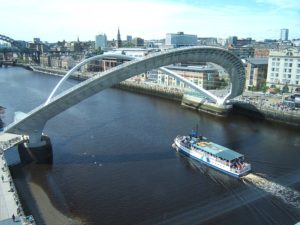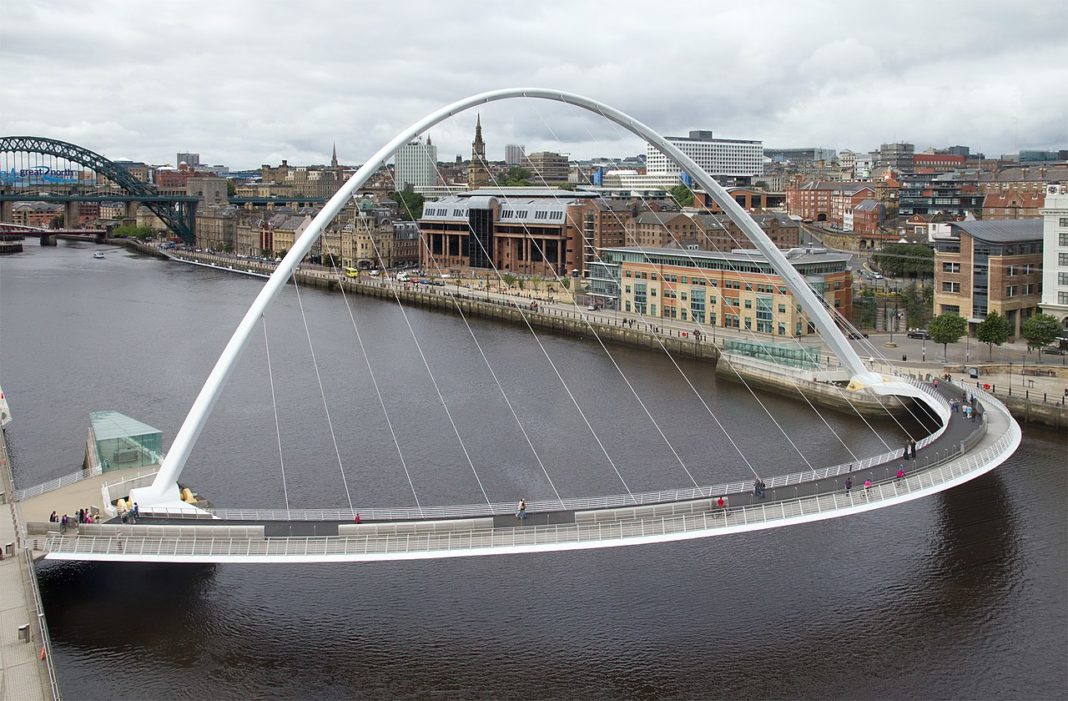The Gateshead Millennium Bridge is a pedestrian and cyclist tilt bridge spanning the River Tyne between Gateshead arts quarter on the south bank and Newcastle upon Tyne’s Quayside area on the north bank.

It was the first tilting bridge ever to be constructed. Opened for public use in 2001, the award-winning structure was conceived and designed by architectural practice WilkinsonEyre and structural engineering firm Gifford. The bridge is sometimes called the ‘Blinking Eye Bridge’ or the ‘Winking Eye Bridge’ due to its shape and its tilting method. The Millennium Bridge stands as the twentieth tallest structure in the city and is shorter in stature than the neighboring Tyne Bridge.

The bridge consists of two steel arches – a deck that acts as the pedestrian and cycle path, and a supporting arch. The bridge was designed to be as light as possible to allow for easy opening and closing, so the two arches are lighter towards the center span than at the hinges. The pedestrian and cycle deck is a parabolic shape with a 2.7 meters vertical camber. It is divided into two separate paths with different levels for the different modes of transport, separated by a stainless steel “hedge” with seating areas and steps interspersed throughout.

Six hydraulic rams (three on each side) tilt the entire 850,000 kg bridge as a single structure, meaning that when the supporting arch lowers, the pedestrian deck rises to create 25 meters of clearance for river traffic to pass underneath. The bridge takes around four minutes to rotate through the full 40° from closed to open, moving as fast as 18 m) per second. The design is so energy-efficient that, in April 2017, it cost just £3.96 per opening. The appearance of the bridge during this manoeuvre has led to it being nicknamed the “Blinking Eye Bridge”, and has solidified its reputation as being not only a functional piece of infrastructure but a spectacle in and of itself. The rotation of the bridge is also used as a self-cleaning mechanism, as rubbish collected on the deck rolls towards traps built at each end.

According to Wikipedia















